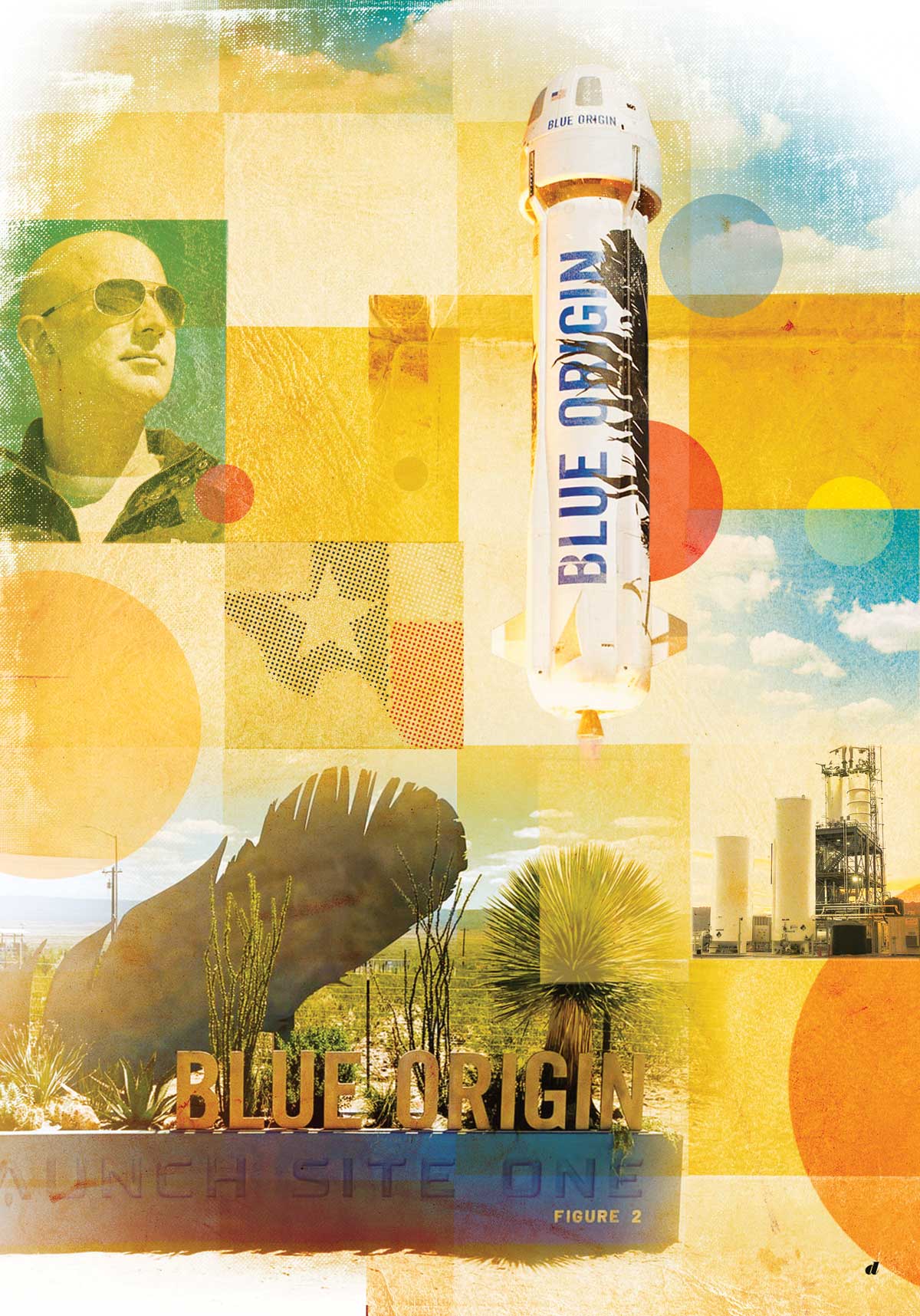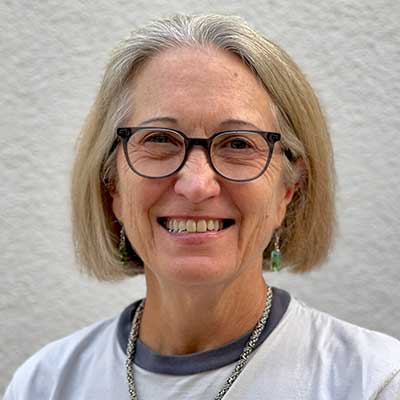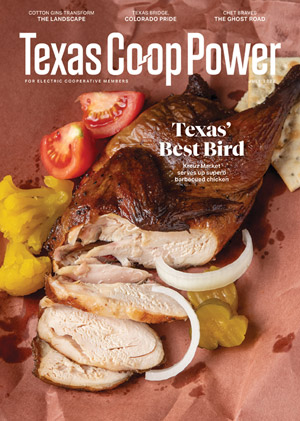The world watched in July 2021 as Blue Origin sent four people on a 10-minute ride to the edge of space, 66.5 miles up. The trip launched from a facility about 20 miles outside Van Horn, in far West Texas.
It was the first time many folks had ever heard of the tiny town of about 2,000. And for some Van Horn residents, it was the first time they’d heard of Blue Origin.
The company started construction on the facility, dubbed Launch Site One, in 2006 on former ranch property north of town. It began testing rockets there in 2012. Some Van Horn residents noticed the sound of rockets blasting off, but many could have mistaken it for train cars connecting on the busy track that slices through the town.
Van Horn Mayor Becky Brewster was city administrator when Blue Origin first arrived. “Most people thought, these are big ideas, but it’s never going to happen,” she says. “There wasn’t a lot of public participation in the process. They kept pretty much to themselves, and construction was so far away that it didn’t affect our daily lives one way or the other.”
That changed in 2021 as test launches became more frequent and once humans started riding the rockets.
“That first launch was unreal,” Brewster says.
“We were almost overcome. All the hotels were full. News reporters were having to stay in Marfa and El Paso.” Space enthusiasts lined the highway to watch the launch.
The flights travel at three times the speed of sound, and occupants float weightlessly for several minutes before their craft descends by giant parachutes for a dusty desert landing nearby.
Some signs of Van Horn’s new far-out identity have popped up: a mural of Blue Origin CEO Jeff Bezos on the side of a building, Blue Origin feather logos on others, space-themed T-shirts and mugs on sale at Hotel El Capitan and at Boots and Scoops, a café. El Capitan’s Gopher Hole Bar has a large silver feather over the door, a token of appreciation from the company.
The feather also adorns a sign along Texas Highway 54 marking the entrance to the launch site. Thomas Lancaster and Belle Peña of Marfa Cement Works, members of Tri-County Electric Cooperative, produced the artsy display—a 20-foot stainless steel feather perched alongside a blue concrete planter filled with native plants.
Blue Origin chose this area for Launch Site One because it provided safe, open space to test, transport and fly launch vehicles, a Blue Origin representative said.
The sprawling launch facility includes a vehicle barn, launch pad and training center. About 10 minutes away is Astronaut Village, a collection of Airstream trailers with a restaurant and bar for those preparing to travel to space.
Van Horn’s economy has long relied on much older forms of transportation; the railroad and Interstate 10 run through town, making it a hub for day trips to Guadalupe Mountains National Park and the McDonald Observatory. But the town is starting to embrace its new role in the cosmos.
“We started a Facebook page where we share announcements of launches,” Brewster says. “And we’re working on an app for this five-county region to highlight points of interest for tourists.”
Van Horn officials meet regularly with Blue Origin, and Brewster says the town would like to have a viewing area for launches. Blue Origin has helped bring in more than $1 million for the community through grants that benefit the school district, food bank and infrastructure, according to Morrissey, who said the company is building an apartment complex and a dozen single-family homes in the area. Blue Origin employs 285 people and 50 contractors in West Texas, and some serve on city councils, school boards and in community groups.
Van Horn’s longtime residents have had mixed reactions to the whole space thing, Brewster says. “Some people don’t even pay that much attention; others see endless possibilities.”
Anyone can sign up online to book a seat on future Blue Origin flights. Prices aren’t public, but a seat on the first flight went for $28 million in an auction. Blue Origin donated that money to its Club for the Future, which funds nonprofit organizations working to support the future of life in space.
The rest of us can make the much less expensive trip to Van Horn. And even take home a T-shirt.



